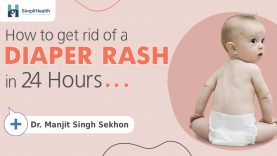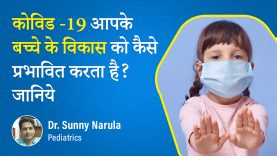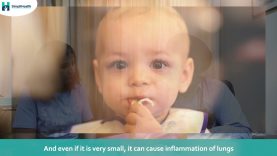Newborn Jaundice Symptoms & Causes | बच्चों में का पीलिया लक्षण, कारण और इलाज
- 1.08K
- 3 years ago
Dr. Manjit Singh Sekhon
Dr. Manjit Singh Sekhon
Newborn Jaundice Symptoms | बच्चों में का पीलिया लक्षण
Newborn jaundice symptoms, How often does jaundice affect the baby? Or Jaundice in Newborns. This is something that causes a lot of confusion in the minds of parents who have a newborn baby. Because jaundice (पीलिया) Is almost invariable and inevitable. Just to give you an idea of the normal Bilirubin levels which is something that denotes the quantity of Jaundice is less than 1 mg in blood. but in children, they will always rise up to 7-8 or sometimes up to 15. Till 15 we consider it normal physiological jaundice. This means there is no disease behind it but it is a normal event that is Going to happen at this point in the baby’s life.
So to give you an idea as to why this happens is because, when the baby is still in its mother’s uterus, it’s getting oxygen from the mother’s blood. In other words, he’s getting his oxygen from the mother’s hemoglobin. And that oxygen is being passed to the baby’s hemoglobin. Now this indirect method of getting oxygen is not as efficient as directly breathing from the air, and getting oxygen by himself directly from the air. So as a result the baby’s hemoglobin rises to carry the maximum amount of oxygen that it can possibly do. And therefore when the baby is born the hemoglobin is around 19-20 gms. A lot higher than what we see in children and in adults. For children, it may be up to 11-12 g percent.
Bilirubin
When the baby is born it gets to breathe on its own, and at that time a signal goes through its body. This says that this excess hemoglobin is no longer required and excess hemoglobin is then eliminated from the body and the rest begins to break up. Once it begins to break up, it is the waste that is yellow in color. This bilirubin is what shows jaundice. This jaundice is the result of raised bilirubin.
So to give you an idea over here, up to 15 milligrams in normal children who are born at full term, we accept to be normal jaundice(पीलिया). But if we go beyond 15 then it is considered to be something that needs treatment.
Why it needs treatments is, if it continues and goes beyond 20, then it crosses what’s called a blood drain barrier and gets deposited in the brain of the baby and causes brain damage. Brain damage is called (something) and it causes a lot of different disabilities in a child later on in life. The most important of these is hearing loss, there are others as well.
Our effort is to detect firstly, this is the liver which is going to cross 20 and then start the treatment.
Jaundice Treatment | Newborn Jaundice Symptoms
So the first important thing like I said is to detect. For detection, we usually look at the child on a daily basis and try to determine, with a certain degree of accuracy to how much jaundice or bilirubin levels is there in that baby. And if it appears to be on the higher side then we take a sample and send it to the lab. And the lab tells us exactly what the limit is. If the limit is above 15, then the first line of treatment is called phototherapy.
Phototherapy
In phototherapy, the child is exposed to the light of a certain wavelength. And when this light falls on the baby’s body it converts the bilirubin which is deposited there into a soluble form which is then eliminated from the baby’s body through the stools.
Exchange Transfusion
But sometimes the bilirubin is rising so rapidly that phototherapy is unable to control it. And in that case, if it goes beyond twenty, then we do what is called an exchange transfusion. And in an Exchange transfusion, the small volume of the baby’s blood is replaced by adult blood, until we remove the entire baby’s blood twice. We wash the baby’s system out and eventually, that reduces the amount of bilirubin. Because from the tissue the bilirubin comes to the blood and we are able to control it and therefore save the baby’s brain from damage.
What are the signs and symptoms of jaundice in a newborn?
The early sign of jaundice is actually the baby yellow eyes. And it can be, starting from the tip of the nose, That is the first thing that appears on the skin and then on the face. And then slowly the yellowness spreads to the rest of the body. From the chest to the back and then the legs.
The most critical part is, if it appears on the soles of the feet then it has probably passed 30. So you can actually grade by looking at it. Parents can’t do that but the pediatrician would.
What causes jaundice in newborns?
Like I just explained to you that while in adults jaundice is normally caused by, of course, there is Hepatic jaundice which is pre-hepatic, is not caused by liver problems. Mostly it is caused by hepatic problems. This means that the liver is not doing its job of taking the bilirubin out of the blood and then excreting it through the body. The liver is infected by some infection of some other diseases, therefore the bilirubin is not excreted from the body. This causes jaundice in adults. But in children, it is never the liver that is involved. It is only that so much bilirubin that the liver just can’t cope with it.















Comments (0)